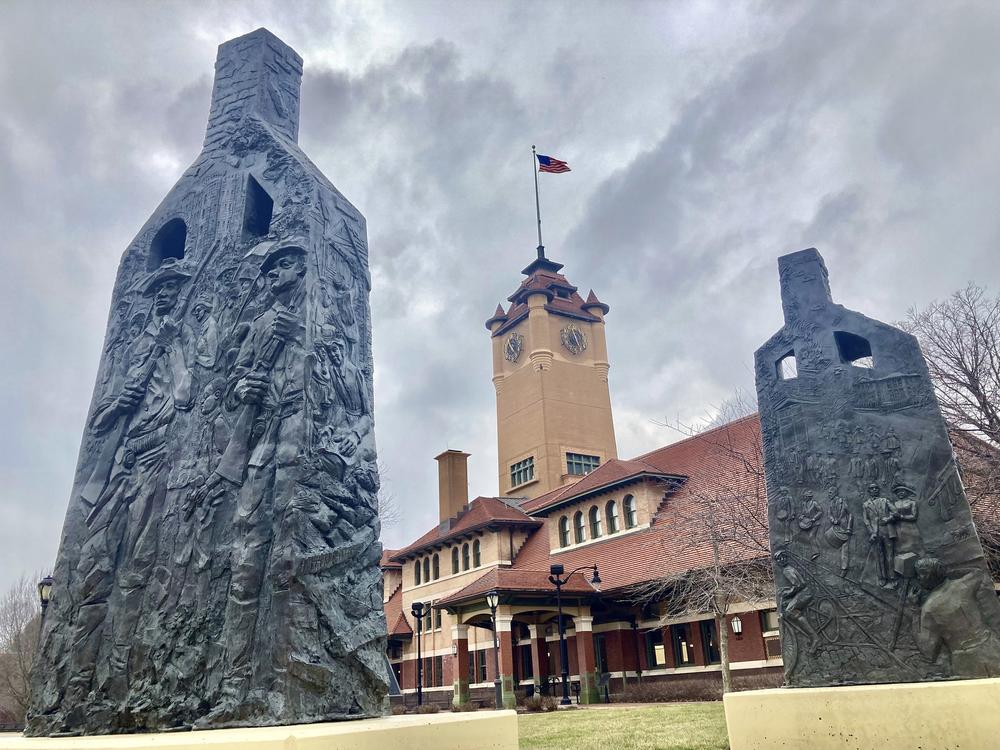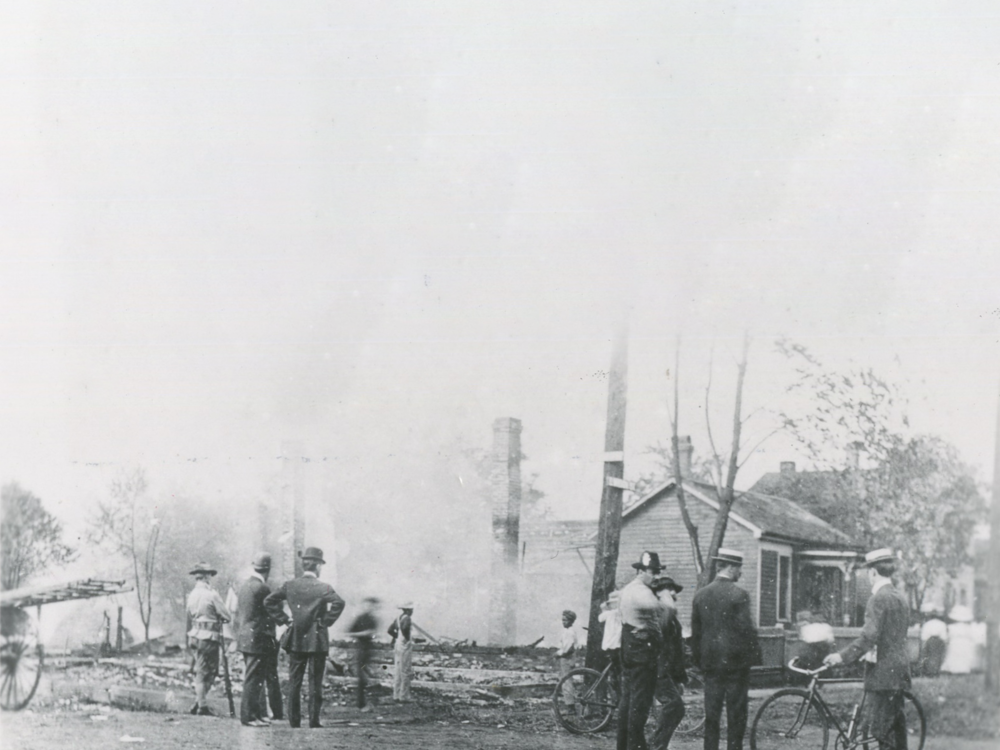Section Branding
Header Content
Biden designates the site of 1908 Springfield, Ill., race riot as a national monument
Primary Content
President Biden on Friday designated a national monument at the site of the deadly 1908 race riot in Springfield, Ill., a tragedy that led to the creation of the NAACP.
"Over a hundred years ago this week, a mob — not far from Lincoln's home — unleashed a race riot in Springfield that literally shocked the conscience of the nation," Biden said at the Oval Office signing of a proclamation to designate the monument.
The riot — which killed several Black residents and destroyed dozens of Black homes and businesses — exemplified the ongoing racial tensions across the United States, including in Northern states, which were stereotyped as being more welcoming to Black residents than the Jim Crow South.
"You listen to some of our colleagues and think 'Oh no, no, no. We've never had this problem.' You know, you're going to continue to have these problems unless we talk about the problems we had before and making sure we solved them," Biden said.
"It could happen again if we don't take care of ourselves and fight for this democracy," he said.
The designation of a monument comes on the 116th anniversary of the race riot. It's part of an ongoing effort to better acknowledge America’s systematic racism and how its violent history has shaped modern society.
"This site weaves together two important threads in our Nation’s story: the hateful violence targeted against Black Americans, and the power of dedicated individuals to come together across racial lines to transform shock and grief into hope and action," the presidential proclamation said.
This latest monument follows calls from progressives to recognize the contributions that Black Americans have made in improving the nation, as well as to more critically examine how racism fueled the success of some of the nation’s standard-bearers.
It also takes place six weeks after the police killing of Springfield resident, Sonya Massey, a 36-year-old Black woman was shot by a sheriff's deputy after calling 911 for help.
What sparked the Springfield race riot of 1908?
The events in Springfield — the hometown of President Abraham Lincoln — were spurred by the July 1908 murder of a white resident, allegedly at the hands of a Black man. Tensions worsened a month later when another Black man was accused of raping a white woman.
The alleged rape victim later admitted to lying to cover up a consensual affair she was having with a white man.
In August, a white mob of thousands terrorized the city’s 2,500 Black residents. Citizens were attacked and brutalized, and the riots resulted in the arson of dozens of Black-owned homes and businesses. Parts of the rampage took place just a few blocks from Lincoln's family home.
The violence that erupted in Springfield served as a wake-up call to white Northerners, highlighting that the mistreatment of Black Americans was not just confined to the South, according to Roberta Senechal de la Roche, a history professor at Washington and Lee University in Lexington, Va.
"One of the really shocking things about the well-publicized Springfield race riot — and its association with Abraham Lincoln — was that the North had a race problem," Senechal de la Roche told NPR in 2008.
The crimes against the city’s Black residents so horrified Black people across the country that it inspired the formation of the NAACP, which remains in existence today.
The meaning behind the "Acts of Intolerance" monument
Artist Preston Jackson, who created dual sculptures commemorating the riot, titled Acts of Intolerance, was inspired by an old photograph that capture the destruction from the riot.
Unveiled on the 100th anniversary of the horrific events, the two sculptures are shaped as charred chimneys to represent the buildings burned during the race riot. Within each chimney column are depictions of men playing music, others holding rifles — evoking themes of both intolerance and redemption.
“Confronting our past straightforwardly is the only way we can learn to develop our future together,” Jackson said. “The imagery leaves the viewer to contemplate their meaning and the long-term effects on how we stand socially today and will stand tomorrow.”


